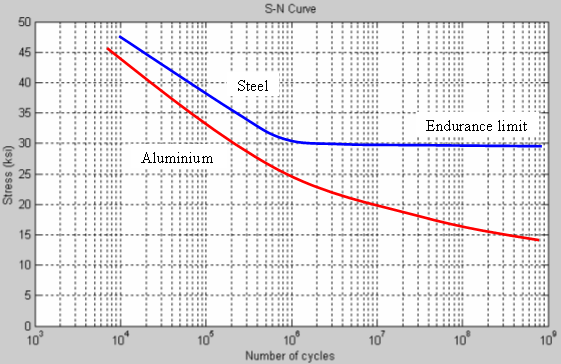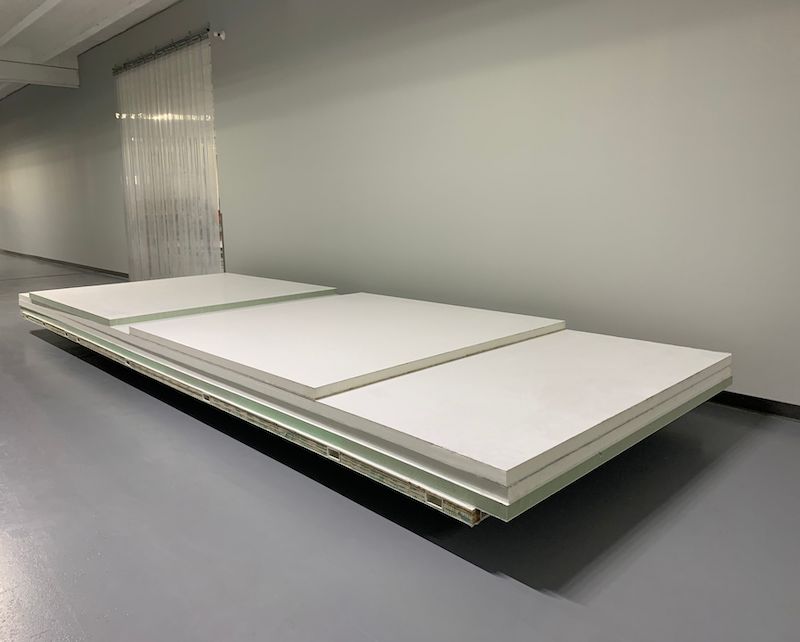FurthurMore
New member
Hi all, this is my first post here.
For a while now I’ve been planning on designing and building my own overlanding vehicle. The idea is to use a a ¾ or 1-Ton full-sized pickup truck (Ford F-250 or F-350, Dodge Ram 2500 or 3500, or Chevy/GMC 2500HD or 3500HD) with a long (8ft) bed, remove the truck bed, and build my own camper on the back. Here is a work-in-progress render:

I am still just in the planning stages at the moment, but hopefully I will be in a position to start the build in about 6 months. The camper habitat/box will be constructed of a welded metal framework, with sheet metal panels riveted on to make the walls. The frame will be primarily constructed of 1.5” (38.1mm) square tubing:

Now the question I have is regarding which metal to use for the framework. I keep going back and forth between what material to use, and I hope some of you guys may be able to give some practical advice.
I have three options:
In the grand scheme of things, I’m not too worried about the cost difference between these materials, so that’s not much of a deciding factor.
I understand that people with larger overlanding rigs with much higher payload capacity could just go with the cheap and easy option of using thick-walled (e.g. 3mm+) mild steel box section and not have to worry about interior corrosion damage ever being much of a concern. As I am using a (relatively smaller) pick-up truck as my base vehicle, I need to make sure everything is light as possible; I’m aiming for under 375lbs / 170kg for the frame, thus the need for thinner box section walls (1.65mm max) if using steel. Maybe interior corrosion is not as much of an issue as I am imagining?
Initially I was going to go with aluminium, but I am now having my reservations about this. It is commonly said that weight-for-weight aluminium is stronger than steel. This is certainly true for the engineering concepts of Yield Strength and Ultimate Tensile Strength, especially for structural grade 6061-T6 aluminium alloy. So that sounds like the obvious option, right? However, upon further investigation, I don’t think this paints a full picture, as I will explain below.
This article, although focusing on boat building, has a lot of relevant information:
In other words, a steel frame would have higher torsion/flexure resistance and impact resistance than an equivalent (as measured by other strength criteria) aluminium frame. An overlanding frame will, of course, undergo plenty of vibration, as well as torsion (although this is hopefully largely mitigated by a 4-point mounting system that I have planned).
Next, there is a potential issue with welding aluminium. My understanding is that welds in steels are as strong as if not stronger than the surrounding metal, but the opposite is the case for aluminium where the welds are much weaker and more brittle than the surrounding metal. As I am a novice welder (I haven’t even started learning TIG yet, although planning to soon) - I assume it’s much more likely that I would make weak and potentially structurally unsuitable welds in aluminium, whereas this is less likely to happen with mild or stainless steel. Does anyone have much experience welding any of these materials? I am also worried about heat-induced warping which could ruin the frame when I’m fabricating it. I assume this effect is worse on aluminium than mild or stainless steel, but I’m not sure?
Another issue with aluminium is it’s limited fatigue life, which is explained well in this article:
Here is more info on Wikipedia, and this graph illustrates this concept well:

But all of what I have said above is all very theoretical – essentially I’m looking for real-world anecdotes or thoughts on the topic.
Perhaps I’m completely over-thinking it, and any of these three materials will do just fine for any realistic stresses that I would encounter?
Thanks for reading!
For a while now I’ve been planning on designing and building my own overlanding vehicle. The idea is to use a a ¾ or 1-Ton full-sized pickup truck (Ford F-250 or F-350, Dodge Ram 2500 or 3500, or Chevy/GMC 2500HD or 3500HD) with a long (8ft) bed, remove the truck bed, and build my own camper on the back. Here is a work-in-progress render:

I am still just in the planning stages at the moment, but hopefully I will be in a position to start the build in about 6 months. The camper habitat/box will be constructed of a welded metal framework, with sheet metal panels riveted on to make the walls. The frame will be primarily constructed of 1.5” (38.1mm) square tubing:

Now the question I have is regarding which metal to use for the framework. I keep going back and forth between what material to use, and I hope some of you guys may be able to give some practical advice.
I have three options:
- Aluminium 6061-T6 (structural grade) alloy: 1.5x1.5x1/8” (38.1x38.1x3.18mm) or 1.5x1.5x3/16” (38.1x38.1x4.76mm) box section. This is the lightest option for a given strength (supposedly – see below). It has relatively good corrosion resistance. I won’t need to worry about the potential for galvanic corrosion at the interface with the aluminium sheet metal wall panels. Can be quite expensive given the thickness I need. From what I hear it can be quite challenging to weld properly. Requires specialist cutting, grinding, and welding equipment.
- Mild Steel (A513 structural grade): 1.5x1.5x0.065” (38.1x38.1x1.65mm) box section. By far the cheapest and most easily available option. I am worried about rust forming on the inaccessible inner walls of the tube that I won’t be able to paint, but maybe there are ways to alleviate this. Corrosion may be a large concern because of the relatively thin walls of the tube (1.65mm), and any thicker would get too heavy for my truck. The easiest option to weld together.
- Stainless Steel 304: 1.5x1.5x0.065” (38.1x38.1x1.65mm) box section. Most corrosion resistant, but is most expensive. Hard to drill holes into - and I am going to need to drill over 2000 holes for rivets.
In the grand scheme of things, I’m not too worried about the cost difference between these materials, so that’s not much of a deciding factor.
I understand that people with larger overlanding rigs with much higher payload capacity could just go with the cheap and easy option of using thick-walled (e.g. 3mm+) mild steel box section and not have to worry about interior corrosion damage ever being much of a concern. As I am using a (relatively smaller) pick-up truck as my base vehicle, I need to make sure everything is light as possible; I’m aiming for under 375lbs / 170kg for the frame, thus the need for thinner box section walls (1.65mm max) if using steel. Maybe interior corrosion is not as much of an issue as I am imagining?
Initially I was going to go with aluminium, but I am now having my reservations about this. It is commonly said that weight-for-weight aluminium is stronger than steel. This is certainly true for the engineering concepts of Yield Strength and Ultimate Tensile Strength, especially for structural grade 6061-T6 aluminium alloy. So that sounds like the obvious option, right? However, upon further investigation, I don’t think this paints a full picture, as I will explain below.
This article, although focusing on boat building, has a lot of relevant information:
One advantage of steel is that between the yield point of mild steel (around 36,000 psi) and the ultimate tensile failure point (around 60,000 psi) there is quite a large plastic range (around 24,000 psi or roughly 40% of the ultimate strength), permitting a steel vessel to endure deflection without failure, so permitting considerable ability to absorb energy.
...
A steel vessel will absorb more energy on impact (broader plastic range). An aluminum vessel of "equivalent" design strength will be considerably less easy to dent (a plus), and will have approximately the same ultimate failure point. Aluminum is said to be less "plastic" in that regard; another way of viewing its lesser resistance to flexure and of understanding the primary requirement for rigidity of structure (to avoid flexure) when designing and building in aluminum.
In other words, a steel frame would have higher torsion/flexure resistance and impact resistance than an equivalent (as measured by other strength criteria) aluminium frame. An overlanding frame will, of course, undergo plenty of vibration, as well as torsion (although this is hopefully largely mitigated by a 4-point mounting system that I have planned).
Next, there is a potential issue with welding aluminium. My understanding is that welds in steels are as strong as if not stronger than the surrounding metal, but the opposite is the case for aluminium where the welds are much weaker and more brittle than the surrounding metal. As I am a novice welder (I haven’t even started learning TIG yet, although planning to soon) - I assume it’s much more likely that I would make weak and potentially structurally unsuitable welds in aluminium, whereas this is less likely to happen with mild or stainless steel. Does anyone have much experience welding any of these materials? I am also worried about heat-induced warping which could ruin the frame when I’m fabricating it. I assume this effect is worse on aluminium than mild or stainless steel, but I’m not sure?
Another issue with aluminium is it’s limited fatigue life, which is explained well in this article:
Components made of stainless steel have infinite fatigue life, which means that they will never fail unless the load exceeds a certain level (ie. single excessive load), which causes “plastic deformation” (i.e. bending). The critical shortcoming of aluminum is its finite fatigue life, which means that aluminum components will ALWAYS eventually break. ALWAYS. It’s just a question of how many fatigue cycles the aluminum will survive. The beefier the frame, the longer it will last.
Here is more info on Wikipedia, and this graph illustrates this concept well:
But all of what I have said above is all very theoretical – essentially I’m looking for real-world anecdotes or thoughts on the topic.
Perhaps I’m completely over-thinking it, and any of these three materials will do just fine for any realistic stresses that I would encounter?
Thanks for reading!




